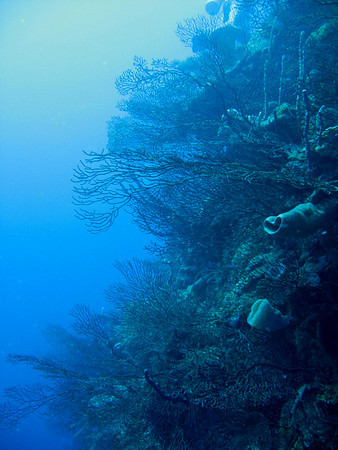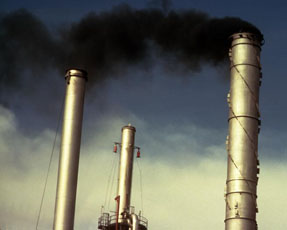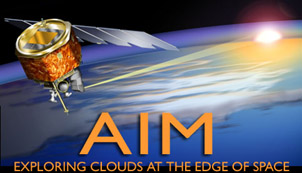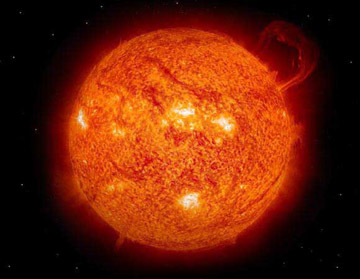Click on image for full size
Courtesy of Anne Pharamond
NCAR Online Education: Coral Reefs on a Changing Planet
A coral reef is like an underwater city. Corals and algae construct the framework that rises off the tropical ocean floor and attract a diversity of inhabitants. Schools of multicolored fish glide above the structure. Invertebrates dart around on its surface. All that busy activity and life exists in a delicate balance.
Even though human populations live on land and coral reefs live in the sea, the health of coral reefs is threatened by humans in many ways. Some of the threats are easy to see. Plastic bottles and other trash can be found littering many reefs, especially those offshore from towns and cities. Sediment in the water or settling on the reef corals and water pollution can also be problematic on many reefs. Overfishing is depleting the numbers of grazing fish in some areas. And scratches on corals from the fins of careless snorkelers, anchors, or even deep gouges from boats that have run aground are visible in many reefs.
There are the visible threats, and then there are the threats that are less visible. Less visible threats can pose great dangers to coral reefs. Coral diseases, warming water, and acidic waters all pose threats to the health of coral reefs. The threats themselves might be hard to see, but their effects are not. Some reefs have been so hard hit that scientists say they will not be able to recover. Scientists predict that over half of the world’s coral reefs may die by 2050 if current pressures continue to threaten reefs.
Acidic Ocean Water
As the concentration of the greenhouse gas carbon dioxide increases in the atmosphere, largely from burning fossil fuels, some of it gets dissolved into ocean water. This addition makes the ocean water more acidic. And acidic water makes it difficult for coral and algae to build the reef framework.
Warming Ocean Water
As the earth warms, some of that heat gets into the ocean. While corals live in warm water, the water can become too warm. When it does, corals become stressed and release the algae that live within their tissues. This is called coral bleaching because the corals look white as their skeletons show through their transparent bodies. New research suggests that some of the world's reefs might be protected if there are areas of the ocean that are able to regulate their temperature.
Coral Diseases
A variety of coral diseases are caused by certain bacteria, fungi, and viruses. There are more diseased corals today than there were several decades ago. These diseases do occur naturally but scientists suspect that the increase in disease is due to pollution and other changes to the environment. And higher sea surface temperatures stress corals, making them more susceptible to disease.
The above, written by Lisa Gardiner, was designed for Understanding Climate Change Today, an online course for educators. Please visit NCAR Online Education for more information about this and other courses.















